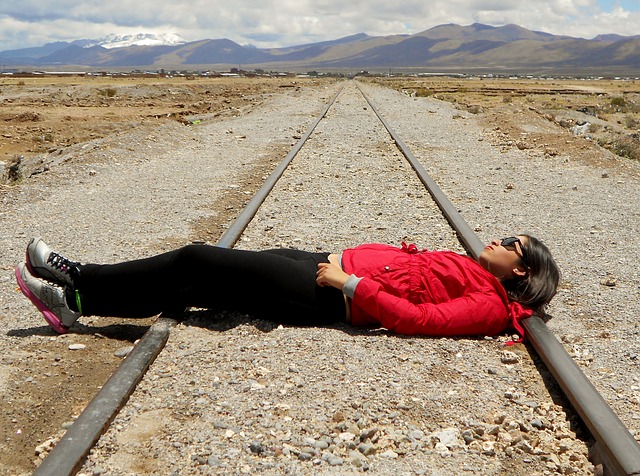It would be easy to shield ourselves from the emotional and physical blows inflicted by the people who have hurt us yet we sometimes forget that our own actions contribute to the cycle of abuse that appears to be perpetual in our lives. We abuse ourselves by the attitudes and perspectives we hold concerning our past abusive situations. How? Take a look at these 7 self directed abuse tactics that if we can recognize and stop, will offer us a more peaceful existence.
1. Trying to figure out why someone chose to hurt you.
We all try to gain some sense of understanding of what happened in order to mentally navigate how to move past the anger, pain, embarassment and fear. But, with all of the mental processessing that we experience, we will never be able to fully understand the mentality of the person who has hurt us because it will never truly make sense to us. Continually immersing ourselves int he experience over and over again trying to rationalize it away by analyzing what we did or didn’t do is a form of self abuse. We punish ourselves by trying to make sense of an action that had nothing to do with us. Their behavior is a result of their issues.
2. Waiting for them to apologize.
We can spend years and even decades in anger waiting for the person who has hurt us to recognize our pain and then make restitution. Sadly, that restitution may never come. What will become of our lives if we decide that the only way we can move on is if the person who has hurt us apologizes?
If we know that they did wrong that should be enough. We have to let go of needing them to acknowledge our pain. The pain is real whether or not they try to convince us it is not. They may never have the courage to admit that what they did was wrong and we can not allow their admission to be the trigger for our healing process. When we wait for them to give us permission to heal, we continue to abuse ourselves.
3. Defining your life by the abuse.
It is always a time to celebrate when we are able to remove ourselves from an abusive situation. The next step is to create a plan for the future, essentially reinventing ourselves outside of the situation we just left. Unfortunately, some people have been impacted so much by the abuse they have escaped that they can not imagine their lives without making that a dominant part of their story.
Some people mold their lives around past abuse because they have no idea how to define themselves outside of it. Wearing the label of ‘abuse victim’ elicits a certain response from people, one of pity, support and recognition. Without being a victim, we lose that attention and support. This is why many feel it is necessary to go on pulling the past abuse into their current existence. Every time you tell that same sad story, you are really saying- I do not know how to re define my life and I will continue to paint myself as a scared, hurt individual because I am comfortable in this pain.
It is easy to re define your life. All you have to do is choose an achievement that you are proud of and work on becoming better at it. This will become your new mission in life and you will never need to call yourself a victim again.
4. Staying connected by focusing on what is happening in their lives.
While we search for the catalyst for our healing process to begin it is very easy to focus on what is happening in the lives of the person who has hurt us. We examine their lives, wondering if we were the reason the abuse happened and if they will have a happy, normal life with someone else. We cringe every time we hear a story of their success. We cry when hear these things because we believe that there is something toxic about us that we trigger the monster inside the abuser.
This behavior is actually a form of self abuse because we condition ourselves to believe that we are bad, disgusting, rotten and worthless. By berating ourselves and looking for clues that the person who hurt us is better off without us, we are abusing ourselves, continuing what they did. Why would we do this? It seems that on a subconscious level, we receive a bit of satisfaction from it. Every time we search for evidence that the person who has hurt us has moved on happily, we validate our own belief that we are the cause of the abuse. Even though we are validating a negative belief, we are still receiving the satisfaction of affirming that we were correct. This twisted self affirmation is self abuse at its most basic core.
5. Going to great lengths to see the person punished.
In the midst of our anger and pain it is quite normal to seek revenge, wish for the abuser’s death or even take measures to see that the person who has hurt us is punished. Although we all feel that abusers may deserve to experience some sort of payback for their actions, the longer we focus on seeking to punish them, the longer we punish ourselves by making them the center of our world.
Sometimes the only way to stop punishing ourselves is to let go of the need to see the abuser hurting so that we can feel better. Sometimes you have to be willing to lose to win. If we escaped the abuse with nothing but the clothes on our back and the will to move forward in life, we have won. We don’t have to go back to try to fight for trinkets and material items that will only tie us to the past. We don’t have to spend decades focused on creating a trap to ensure the abuser will be ensnared. We don’t have to make watching their downfall become our life mission. When we do this we dismiss any chance of creating a beautiful life for ourselves. The pain will go away when you decide that the abuse was not the most important moment in your life. You have the on and off switch.
The child says- Please don’t hurt me.
The victim says- I won’t allow you to hurt me anymore.
The wise adult says- I can decide how long this hurts me.
Follow OneLessSecret

